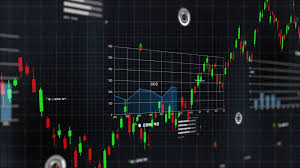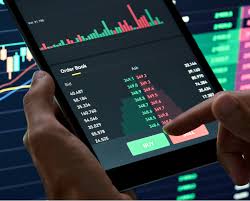
Mục Lục
Essential Insights into Crypto Trading Technical Tools
In the rapidly evolving world of cryptocurrencies, having a good grasp of various trading technical tools is vital for traders aiming to maximize their profits and minimize risks. With the right tools, traders can analyze market trends, manage their portfolios, and execute trades more effectively. For detailed insights, check out this Crypto Trading Technical Tools https://www.newsvoir.com/index.php?page=3257.
Understanding Technical Analysis
Technical analysis is the foundation of crypto trading. It involves analyzing price movements and trading volumes to predict future price movements. Unlike fundamental analysis, which looks at the broader economic factors affecting asset prices, technical analysis focuses purely on historical price data and market sentiment. Traders use various technical indicators to aid this analysis.
Key Technical Tools for Crypto Trading
Here are some of the most essential technical tools every crypto trader should consider:
1. Charting Platforms
A reliable charting platform is fundamental for any trader. Platforms like TradingView, Coinigy, and CryptoCompare offer various chart types (candlestick, line, bar) and a plethora of technical indicators. Users can customize charts to suit their trading preferences, allowing for a clear visual representation of market trends.
2. Moving Averages

Moving averages are one of the most commonly used indicators in crypto trading. They help smooth out price action and identify trends over a specific period. The two most popular types are the Simple Moving Average (SMA) and the Exponential Moving Average (EMA). Traders often look for crossovers between shorter and longer moving averages to find potential entry and exit points.
3. Relative Strength Index (RSI)
The Relative Strength Index (RSI) is a momentum oscillator that measures the speed and change of price movements. It ranges from 0 to 100, and traditional interpretation considers an asset overbought when the RSI is above 70 and oversold when it is below 30. Traders use RSI to confirm trends and look for potential reversals.
4. Bollinger Bands
Bollinger Bands consist of a middle line (SMA) and two outer bands that are standard deviations from the SMA. They help traders identify volatility and potential price breakouts. When the bands widen, it indicates increased volatility, while narrowing bands suggest decreased volatility. Price movements outside the bands can signal potential trading opportunities.
5. Fibonacci Retracement
Fibonacci retracement levels are horizontal lines that indicate potential support and resistance levels based on the Fibonacci sequence. Traders use these levels to identify possible reversal points, making them a valuable tool for planning entry and exit strategies. The key Fibonacci levels to watch are 23.6%, 38.2%, 50%, 61.8%, and 100%.
Automated Trading Tools
In addition to manual trading tools, several automated trading systems can optimize trading strategies. Automated trading systems analyze market trends and execute trades based on pre-defined criteria. Bots can operate 24/7, making them ideal for traders who cannot monitor the markets constantly.
1. Trading Bots

Trading bots are software programs that automatically buy and sell on behalf of traders based on predefined rules and strategies. Bots continually analyze market data and can execute trades within milliseconds, seizing opportunities that manual traders might miss.
2. Signal Generators
Signal generators provide traders with buy and sell signals based on various criteria, including technical indicators, market news, and sentiment analysis. Many traders use these signals as a part of their overall trading strategy to confirm their decisions.
The Importance of Risk Management Tools
While trading tools assist in making informed decisions, effective risk management is essential to protect capital. Various tools and strategies can help traders manage their risk exposure effectively.
1. Stop-Loss and Take-Profit Orders
A stop-loss order automatically sells a cryptocurrency when it reaches a predetermined price, limiting an investor’s loss on a position. Conversely, a take-profit order secures gains by selling once a certain price point is reached. These orders are crucial for maintaining discipline in trading and ensuring losses are kept within acceptable limits.
2. Portfolio Diversification Tools
Diversification is a key aspect of risk management. Tools such as portfolio trackers allow traders to monitor different assets in real-time and assess their performance. By diversifying across various cryptocurrencies and other assets, traders can reduce their overall risk exposure.
Conclusion
The use of technical tools in crypto trading can significantly enhance a trader’s ability to analyze markets and make informed decisions. From charting platforms to automated trading software, each tool plays a vital role in a trader’s overall strategy. Understanding how to use these tools effectively, alongside a robust risk management plan, is essential for success in the volatile world of cryptocurrency trading.
